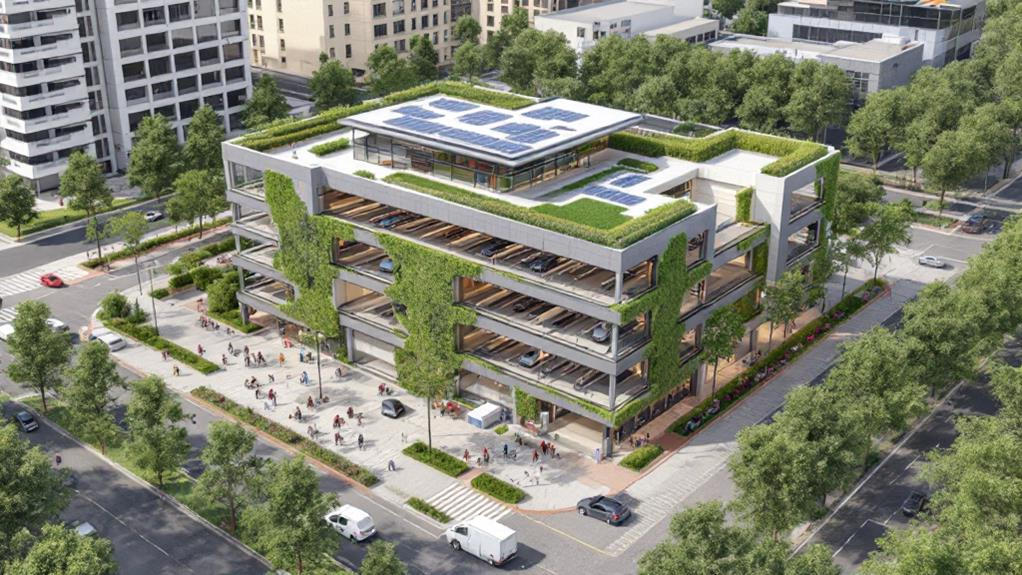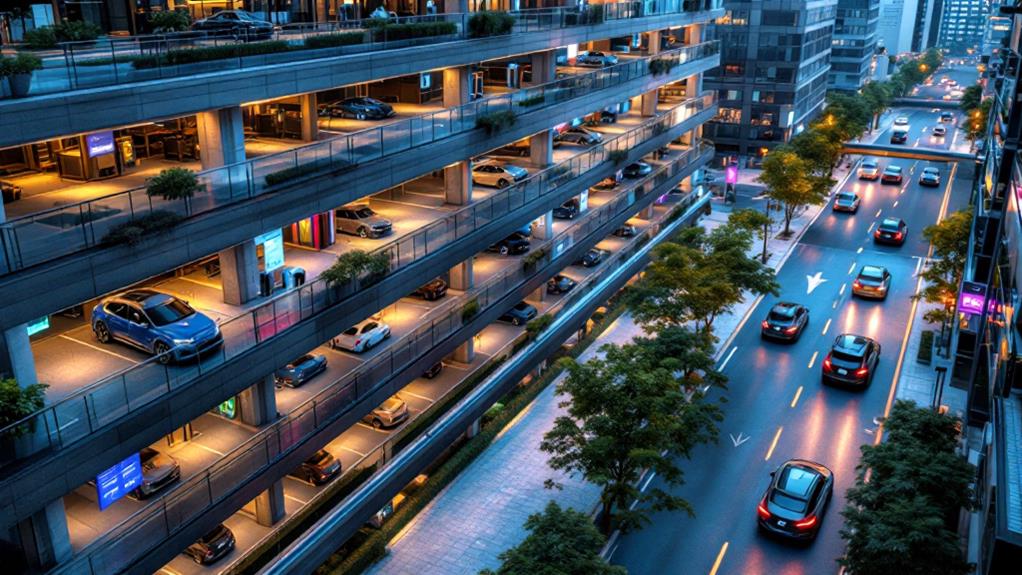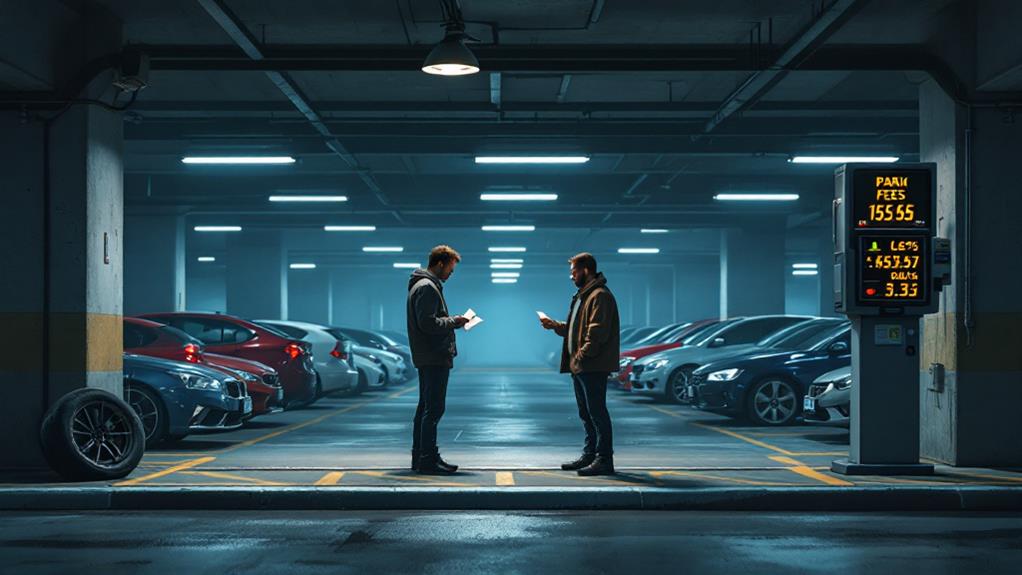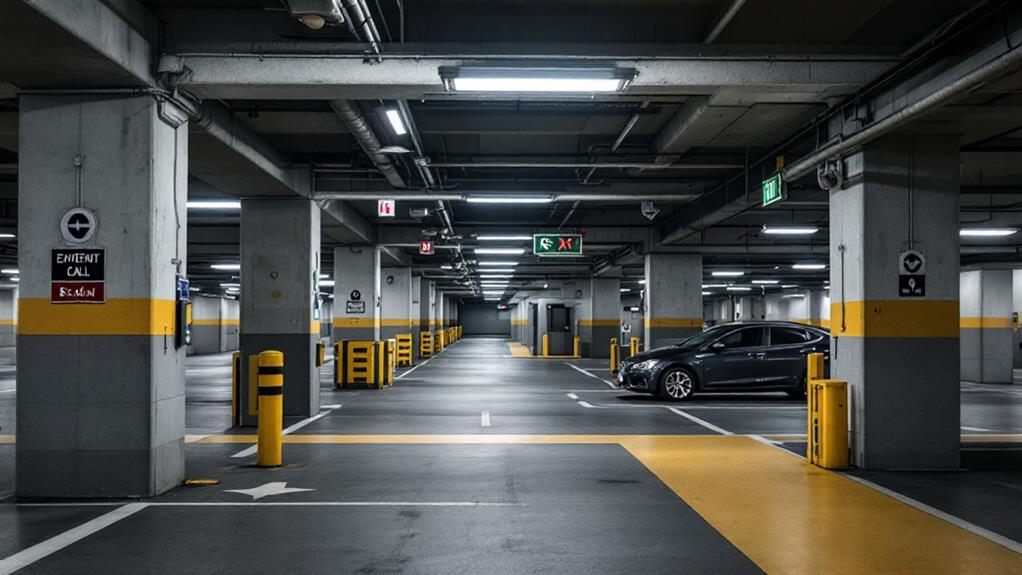How Public Parking Garages Impact Urban Planning and Design

Public parking garages greatly impact urban planning and design, shaping cityscapes and influencing mobility patterns. They've evolved from simple car storage to multifunctional spaces that prioritize sustainability and community engagement. You'll find modern garages incorporating green technologies, smart parking systems, and pedestrian-friendly features. These structures can elevate local economies by attracting businesses and customers, but they also present challenges for affordable housing and sustainable transportation initiatives. Urban planners are reimagining garages as thriving community hubs, integrating art, recreation, and social spaces. As cities endeavor for smarter, more livable environments, the role of parking garages continues to change in exciting ways.
The Evolution of Parking Policies
Over the past few decades, parking policies in major European cities have undergone a significant change. Urban planning has shifted away from accommodating cars to prioritizing people and sustainable mobility. You'll notice that cities like Amsterdam, Paris, and Antwerp have been reducing on-street parking and increasing paid parking zones. This shift in parking policy aims to discourage car use and promote alternative transportation options.
In Berlin and Brussels, you'll find examples of innovative approaches to city planning. Berlin has deregulated off-street parking, while Brussels' Good Move Regional Mobility Plan focuses on reducing congestion and encouraging sustainable modes of transport. Copenhagen has taken a bold approach by implementing high parking rates and steadily reducing on-street parking spaces, reclaiming public areas for pedestrians and cyclists.
These changes in parking management are essential for smart city development. Public parking structures are transforming to become more than just storage spaces for cars. They're now integral to urban design, incorporating shared parking spaces and promoting sustainable mobility solutions. By rethinking parking policies, cities are aligning their urban planning goals with sustainability objectives, reducing carbon emissions, and improving overall quality of life for residents.
Reimagining Garage Functionality
Parking garages are undergoing a radical alteration. You're witnessing a transformation from utilitarian structures to stimulating, human-centered spaces that enhance the collective experience of communities. These reimagined garages are becoming integral components of the urban environment, incorporating elements that go far beyond mere vehicle storage.
You'll find innovative designs featuring playful additions like slides, balance beams, and sports-themed graphics, creating inspiring moments for users. Underutilized garages are being repurposed into multifunctional spaces, boasting amenities such as basketball courts, futsal pitches, and artist-commissioned murals. This approach revitalizes underserved areas and improves the quality of life for residents.
The emphasis on placemaking and pedestrian-friendly features in parking garage design is transforming the built environment. Bright colors, massing breaks, and expansive courtyards create welcoming spaces that nurture stronger connections between people and their communities. This shift towards social infrastructure aims to heighten everyday experiences and infuse humanity into urban spaces.
Sustainable Design in Parking Structures

As urban design evolves, the focus on sustainability has become a driving force in parking garage construction. You'll find that modern parking facilities are embracing eco-friendly design principles to support sustainable urban development goals. By incorporating energy-efficient systems and environmentally-friendly materials, these structures are reducing their negative impact on the environment.
When you visit a sustainable parking garage, you'll notice features like solar panels, LED lighting, and advanced ventilation systems that lower energy consumption and carbon emissions. These facilities also maximize the use of natural light, implement stormwater management systems, and incorporate greenery to create a more harmonious built environment.
You'll find strategically placed charging stations for electric vehicles, encouraging the adoption of cleaner transportation options. This aligns with the principles of livable, walkable, and transit-oriented communities by minimizing car-centric infrastructure.
Economic Implications of Parking Garages
In recent years, the economic impact of parking garages has become a hot topic in urban planning discussions. These structures can drastically influence property values and attract new businesses to city centers by ensuring customer access. You'll find that strategically placed public parking facilities can enhance foot traffic and sales for nearby retail and dining establishments, contributing to urban vitality.
However, the economic implications of parking structures aren't all positive. The construction costs of these facilities are substantial, with a single parking space potentially costing up to $34,000. These expenses are often passed on to renters and buyers, affecting housing affordability. Minimum parking requirements for new developments can be particularly burdensome for affordable housing projects, where residents are less likely to own cars.
As cities evolve, urban planners are reconsidering the role of parking in public spaces. Reforming parking regulations and promoting alternative transportation options can help reduce the economic impact of car-centric infrastructure. By shifting focus away from extensive parking structures, cities can improve housing affordability and create more lively, pedestrian-friendly urban environments that don't rely heavily on car ownership.
Integrating Technology for Smart Parking

The integration of smart technology is revolutionizing urban parking systems. As cities grapple with the impact of parking on urban design, smart parking solutions offer a convenient solution to optimize the use of available spaces. By implementing sensors, mobile apps, and dynamic pricing, you'll see a significant change in how parking is managed and employed.
- Reduced traffic congestion
- Lower emissions
- Improved urban mobility
- Enhanced user experience
- Data-driven decision making
Smart parking technologies can help you find available spaces quickly, reducing the time spent circling for parking. This not only saves you time but also decreases traffic congestion and emissions. With real-time information on parking availability and rates, you can make informed decisions about where to park, potentially opting for less crowded areas or choosing public transportation instead.
Monthly parking subscribers can benefit from automated systems that streamline access and payment. Furthermore, the data collected from these smart systems allows city planners to enhance the urban environment by making data-driven decisions about the number of parking spaces needed and their ideal locations. By integrating parking with broader mobility platforms, smart parking becomes an indispensable component in creating more efficient and livable cities.
Community-Centered Garage Transformations
You might be surprised to learn that parking garages are evolving beyond their utilitarian roots. City planners are reimagining these structures as vibrant community spaces that enhance the urban experience. Instead of just being a place to park, new parking garages are incorporating themed courtyards, recreational equipment, and artist-commissioned artwork.
These innovative designs draw inspiration from local sports and culture, creating engaging social experiences. For example, you'll find garages with an urban vibe in NYC and Olympic-themed elements in LA. The construction of parking facilities now emphasizes placemaking and human-centered design, shifting the workplace experience to begin before you even leave your car.



